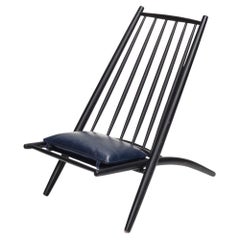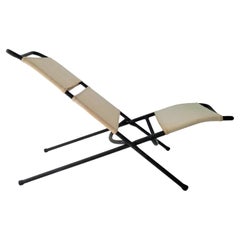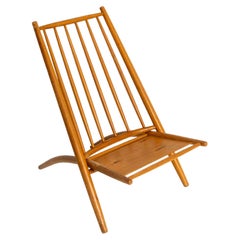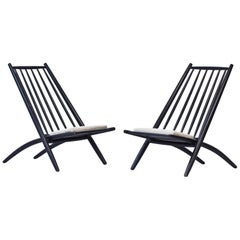Tapiovaara Congo
Vintage 1950s Swedish Scandinavian Modern Lounge Chairs
Wood
Vintage 1950s Swedish Scandinavian Modern Lounge Chairs
Wood
Vintage 1950s Finnish Mid-Century Modern Lounge Chairs
Metal, Steel
Recent Sales
Vintage 1960s Finnish Scandinavian Modern Lounge Chairs
Birch
Vintage 1950s Finnish Scandinavian Modern Lounge Chairs
Vintage 1950s Finnish Scandinavian Modern Lounge Chairs
Vintage 1950s European Scandinavian Modern Lounge Chairs
Bentwood
Vintage 1950s Swedish Scandinavian Modern Armchairs
Wood
Vintage 1950s Swedish Mid-Century Modern Lounge Chairs
People Also Browsed
Vintage 1970s Italian Space Age Architectural Elements
Fiberglass
Vintage 1950s Danish Scandinavian Modern Lounge Chairs
Wicker, Wood
Vintage 1950s Finnish Scandinavian Modern Chandeliers and Pendants
Metal, Brass
Vintage 1960s German Mid-Century Modern Stools
Chrome
21st Century and Contemporary Danish Chandeliers and Pendants
Steel
21st Century and Contemporary Italian Mid-Century Modern Wall Lights and...
Brass, Metal
Vintage 1950s Dutch Mid-Century Modern Daybeds
Metal, Steel
Mid-20th Century Finnish Mid-Century Modern Dining Room Sets
Birch
Vintage 1960s Indian Mid-Century Modern Lounge Chairs
Velvet, Rattan, Teak
Vintage 1970s American Post-Modern Sofas
Metal
Early 20th Century French Art Deco Armchairs
Leather, Fabric, Mahogany
Vintage 1980s Italian Mid-Century Modern Bookcases
Glass, Plexiglass, Wood
Vintage 1970s Italian Mid-Century Modern Sofas
Upholstery
Mid-20th Century German Space Age Chairs
Velvet, Fiberglass
Mid-20th Century American Campaign Chairs
Upholstery, Wood
Mid-20th Century French Brutalist Dining Room Chairs
Beech
Ilmari Tapiovaara for sale on 1stDibs
During the mid-20th century, Finnish furniture designer Ilmari Tapiovaara worked with pine, teak and his country’s native birch to create sleek and sculptural chairs, dining room tables and bookcases in the Scandinavian modern style. Tapiovaara’s areas of expertise expanded beyond furniture to include interior architecture, wooden sculptures, film posters and cutlery.
After completing his studies at the Central School of Applied Arts in Helsinki, Tapiovaara embarked on a design career that would envelop his entire life. As a young man, Tapiovaara idolized revered architect and furniture designer Alvar Aalto — whom, with his wife, Aino Aalto, cofounded Artek, the company that would eventually manufacture the majority of Tapiovaara’s creations. The budding designer had one of Aalto’s chairs in his apartment while he was a student. After graduating, he worked as an assistant in an office at Le Corbusier, then as a designer and artistic director at Asko.
By 1951, Tapiovaara and his wife, Annikki, had established their own studio. A few years previous, the pair had designed the now-legendary Domus chair while creating interiors and furnishings for a new student housing complex in Helsinki. Made of molded plywood and easily stackable, the ergonomic Domus chair, with its slender form, featured a modest silhouette — its lightweight structure allowed for easy exporting, and iconic mid-century modern furniture manufacturer Knoll added a low-backed version to its offerings in the early 1950s. (It was marketed as the Finn chair in the United States.)
Tapiovaara went on to design pieces for Pihlgren ja Ritola and Santa and Cole. His experience earned him teaching positions at the Institute of Applied Arts, the Helsinki University of Technology and the Illinois Institute of Technology. While in Chicago for the latter, he worked in the office of Mies van der Rohe.
Tapiovaara centered his passion for design on social responsibility. He wanted his creations to be accessible to everyone, which was the concept behind his democratic approach. In Finland’s postwar era, the goal was exemplary, affordable designs. With this in mind, he created products such as stackable chairs and “knock-down” pieces packed flat, so they shipped efficiently and cost less.
An influential champion of his profession, he spent two decades as a United Nations ambassador, working to improve design’s contribution to society. His lasting, collectible furniture is a testament to the designer’s goal to create humane, radiant and intimate spaces. The United Nations project included traveling to Paraguay to create much-needed furniture. A similar project followed in Mauritius.
Tapiovaara’s success as an industrial and mass producer of everyday furniture was widely recognized and awarded. He received six gold medals for his chairs alone at the Milan Triennials. He also accepted a Good Design award, the Finnish State Design Award, a prize from the Finnish Culture Foundation and the Furniture Prize of the SIO Interior Architects’ Association of Finland.
Find vintage Ilmari Tapiovaara seating, tables and lighting on 1stDibs.
Finding the Right Lounge-chairs for You
While this specific seating is known to all for its comfort and familiar form, the history of how your favorite antique or vintage lounge chair came to be is slightly more ambiguous.
Although there are rare armchairs dating back as far as the 17th century, some believe that the origins of the first official “lounge chair” are tied to Hungarian modernist designer-architect Marcel Breuer. Sure, Breuer wasn’t exactly reinventing the wheel when he introduced the Wassily lounge chair in 1925, but his seat was indeed revolutionary for its integration of bent tubular steel.
Officially, a lounge chair is simply defined as a “comfortable armchair,” which allows for the shape and material of the furnishings to be extremely diverse. Whether or not chaise longues make the cut for this category is a matter of frequent debate.
The Eames lounge chair, on the other hand, has come to define somewhat of a universal perception of what a lounge chair can be. Introduced in 1956, the Eames lounger (and its partner in cozy, the ottoman) quickly became staples in television shows, prestigious office buildings and sumptuous living rooms. Venerable American mid-century modern designers Charles and Ray Eames intended for it to be the peak of luxury, which they knew meant taking furniture to the next level of style and comfort. Their chair inspired many modern interpretations of the lounge — as well as numerous copies.
On 1stDibs, find a broad range of unique lounge chairs that includes everything from antique Victorian-era seating to vintage mid-century modern lounge chairs by craftspersons such as Hans Wegner to contemporary choices from today’s innovative designers.




